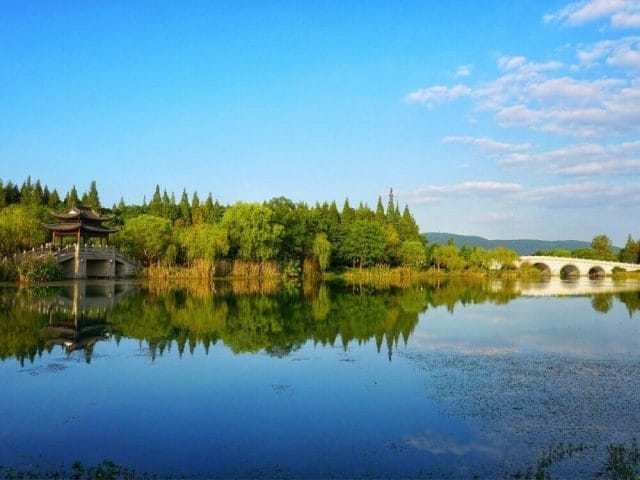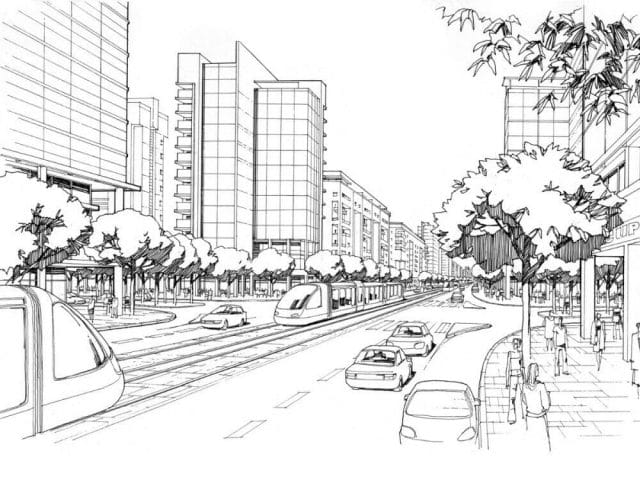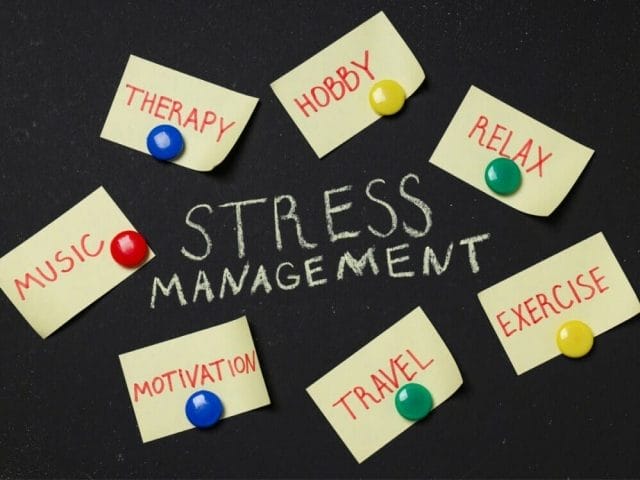In the hustle and bustle of daily life, your inner artist might be yearning for a quiet space to breathe and flourish. Unleash your creative potential with these 7 meditative and mindfulness exercises designed to reconnect you with your artistic spirit. Whether you’re a painter, writer, musician, or simply seeking a fresh perspective, these practices will help you tap into a wellspring of inspiration and express yourself more authentically.
Introduction to Mindfulness and Creativity
Mindfulness isn’t just about sitting in a quiet room with your eyes closed. It’s about engaging fully with the present moment, and when it comes to creativity, this can be a game-changer. For artists, both amateur and professional, mindfulness can unlock a deeper wellspring of inspiration and innovation.
Meditation and mindfulness practices work by quieting the noise in the mind. This silence can act as a blank canvas, allowing artistic ideas to emerge. When you’re not preoccupied with worries about the future or ruminations on the past, your brain is freer to explore new ideas and creative solutions.

Scientific studies back up this connection. Research shows that meditation can lead to increased gray matter density in the brain, particularly in areas associated with learning, memory, and emotional regulation. This neurological boost can help you harness your full creative potential.
Combining mindfulness with artistic practice isn’t just beneficial for creativity; it can also enhance your overall well-being. Reduced stress, enhanced focus, and improved emotional balance can make your creative sessions more productive and enjoyable. The key is consistency and willingness to integrate these practices into your daily routine.
Laying the Foundation with Basic Breathing Exercises
Breathing is more than just a life-sustaining function; it can be a powerful tool for unlocking creativity. By focusing on your breath, you can clear mental clutter and create space for new ideas to flourish. Basic breathing exercises are a great starting point for anyone looking to incorporate mindfulness into their creative routine.
To begin, find a quiet spot where you won’t be disturbed. Sit comfortably with your back straight and close your eyes. Take a deep breath in through your nose, filling your lungs completely. Hold it for a moment, then release the breath slowly through your mouth. Repeat this cycle a few times, paying close attention to the sensation of the breath moving in and out of your body.

Another effective technique is the 4-7-8 breathing exercise. Inhale quietly through your nose for a count of four, hold the breath for a count of seven, and exhale completely through your mouth for a count of eight. This method not only calms the mind but also oxygenates the body, preparing you for a more focused and creative state.
Controlled breathing has been shown to activate the parasympathetic nervous system, promoting relaxation and reducing stress. This physiological shift can pave the way for clearer thinking and enhanced creativity. With regular practice, these simple exercises can become a cornerstone of your artistic process.
Starting with basic breathing exercises might seem too simple, but their impact is profound. By establishing a regular breathing practice, you’re setting the stage for deeper mindfulness and, consequently, greater creative output.
Visualizing Creativity: Guided Imagery Meditation
Guided Imagery Meditation is a powerful technique that uses the mind’s eye to visualize creativity. It’s more than visualizing pretty pictures—it’s about immersing yourself in a sensory experience that can spark new artistic ideas.
To begin, find a comfortable position and close your eyes. Start with a few deep breaths to center yourself. Visualize a scene in your mind—this could be a place where you feel at peace, or a flight of imagination that excites you. Engage all your senses in this visualization. Imagine the colors, the sounds, the smells, and even the textures of your chosen scene.
This practice works by connecting different parts of your brain. As you visualize, your brain can’t distinguish much between an actual experience and an imagined one.

This neural activity can trigger inspiration and innovative ideas. Artists often find that making their visualizations as vivid as possible helps in translating these imagined scenes into tangible art.
Consider using a guided recording if you’re new to this practice. Many apps and online resources offer guided imagery meditations tailored for creativity. These resources can provide a framework, making it easier for you to get into the flow.
Engaging in Guided Imagery Meditation regularly can significantly boost your creativity. Whether you’re a painter, writer, musician, or any other type of artist, this technique can help unlock new perspectives and ideas.
Embracing Nature: The Art of Mindful Walking
Mindful walking combines the benefits of physical activity and mindfulness, creating a fertile ground for creative inspiration. Imagine this: you’re walking through a park or along a quiet path, fully present in each step. This practice not only calms the mind but also awakens the senses, making you more receptive to the natural beauty around you.

To get started, choose a location that inspires you—preferably somewhere with minimal distractions. As you begin walking, pay attention to each step. Feel the ground under your feet, the rhythm of your breath, and the sounds around you. Whenever your mind wanders, gently bring your focus back to these sensations.
The simplicity of mindful walking is its power. With each step, you clear mental clutter, making room for new ideas and insights. Nature has always been a muse for artists, and mindful walking enhances this connection by allowing you to experience your surroundings in a deeply engaged manner.
Many artists have found inspiration in nature, leveraging the clarity and peace that mindful walking provides. Monet had his garden, Thoreau his woods, and many contemporary artists seek out nature as a retreat from the chaos of everyday life. This practice helps you become more attuned to your environment, which can directly translate into your art.
Mindful walking is not about reaching a destination; it’s about enjoying the journey. By integrating this practice into your routine, you can cultivate a richer, more nuanced view of the world, which can lead to more authentic and inspired artistic creations.
Freeing the Mind with Zentangle Drawing
Zentangle drawing offers a unique blend of creativity and mindfulness. At its core, it’s a meditative art form involving the creation of intricate patterns and designs, known as tangles, which are drawn within set boundaries called tiles. This method encourages you to lose yourself in the process, making it ideal for those looking to merge mindfulness with creativity.
To start, you’ll need a few basic materials: a pen, a piece of paper, and a quiet space. Draw a border or a defined shape on your paper to create a tile. Begin with one pattern and let your pen flow, adding new tangles as you go. The goal is to focus on each stroke, letting your mind relax and your creativity take over.
One of the beauties of Zentangle is that there are no mistakes—only opportunities for new patterns. This approach can help alleviate the pressure to create a ‘perfect’ piece of art, allowing for greater freedom and expression. Each session becomes a mindful journey where the destination is a beautiful, intricate design.

Zentangle drawing can be particularly beneficial for reducing stress and anxiety, which often hinder creative flows. By concentrating on repetitive, simple strokes, your mind enters a state of flow where worries and distractions fade away. This calm, centered state is the ideal breeding ground for new artistic ideas.
Many artists use Zentangle as a warm-up exercise or a way to overcome creative blocks. Even spending just 15 minutes on a Zentangle can reset your mind and invigorate your creative spirit. The practice not only enhances your drawing skills but also enriches your overall well-being, making it a valuable addition to any artist’s toolkit.
Exploring Mindful Music: Improvisation and Flow
Music and mindfulness have a special relationship, where one can enhance the experience and effectiveness of the other. Incorporating mindfulness into musical practice, especially during improvisation, can unlock new levels of creativity and expression.
Begin by selecting your instrument of choice, whether it’s a guitar, piano, or even your voice. Find a quiet space where you can focus without interruptions. Start with a few deep breaths to center yourself, similar to the breathing exercises discussed earlier. Then, let yourself play. Instead of focusing on playing something ‘good,’ focus on the sensations and sounds you are creating.
Improvisation is about spontaneous creation, and mindfulness helps you become more attuned to the present moment. Pay attention to each note, each rhythm, and how they resonate with you. When your mind drifts, gently guide it back to the music. This practice of refocusing can enrich your musical improvisation, making it more genuine and emotionally resonant.

Consider exercises where you focus on different aspects of your music. One session might focus on rhythm, another on melody, and another on harmony. Break down the components and dive deeply into each one with full presence. This attentive approach not only hones specific skills but also broadens your creative horizons.
Many musicians have found that mindful music practice can lead to unexpected and delightful artistic breakthroughs. The discipline of returning your focus to the music allows for a deeper connection to your instrument and your own creativity, paving the way for unique, inspired compositions.
Using technology can also aid mindful music practice. There are apps designed to support improvisation with backing tracks or ambient sounds that help maintain your focus. Experiment with these tools to find what best enhances your mindful music sessions.
Integrating mindfulness into your musical routine doesn’t have to be time-consuming. Even a short, mindful improvisation session can invigorate your creative spirit, making this practice a rewarding addition to your artistic toolkit.
Yoga: Union of Body, Mind, and Artistic Expression
Yoga provides a holistic approach to enhancing creativity by uniting the body, mind, and spirit. The practice’s physical postures, breathing techniques, and meditative aspects collectively foster a conducive environment for creative expression.
Start with a simple routine that integrates both physical and mental elements. Poses like the Warrior series, Tree pose, and Child’s pose are excellent for grounding and focusing the mind.

Pair these with mindful breathing exercises, paying attention to the inhale and exhale rhythm. This integration creates a state of flow, where the mind is clear, and the body is energized.
The practice of yoga also encourages self-awareness and emotional balance, essential components for any artist. By becoming conscious of your physical state and emotional landscape, you can channel these insights into your art. For instance, the calmness achieved after a yoga session can help in creating serene and harmonious pieces, while a more vigorous practice might inspire dynamic and energetic works.
Incorporating yoga into your artistic routine doesn’t require extensive time commitments. Even a short, 15-minute session can make a noticeable difference. The key is consistency and intentionality. Regular practice helps build a reservoir of creative energy that’s readily accessible when you sit down to create.
It’s also beneficial to explore yoga classes or online tutorials that focus on creativity and mindfulness. These specialized classes often combine traditional yoga postures with exercises specifically designed to stimulate creative thinking and expression.
Numerous artists swear by yoga as a crucial part of their creative process. Stories of painters, writers, and musicians finding enhanced clarity and inspiration through yoga are plentiful. This practice not only boosts your artistic output but also enhances your overall well-being, making it a dual-benefit addition to your daily routine.
Journaling as a Mindfulness Practice
Journaling is a versatile tool that can significantly enhance mindfulness and creativity. It’s an accessible way to clear your mind, process emotions, and capture fleeting ideas, all of which can feed into your artistic endeavors. Start by setting aside a dedicated time each day for journaling. This could be in the morning, as a way to set intentions for the day, or in the evening, to reflect on your experiences. Use a notebook that feels special to you and a pen that writes smoothly, making the process enjoyable.
Begin each session by taking a few deep breaths to center yourself. Then, let your thoughts flow onto the page without any censorship or judgment. Write about anything that comes to mind, whether it’s an idea for a project, a description of something you observed, or a reflection on your emotional state.

Structured prompts can also be incredibly helpful. Consider questions like, “What inspired me today?” or “What challenges did I face and how did I overcome them?” These prompts can guide your thoughts and help you delve deeper into your creative psyche.
Reflecting on your journal entries can lead to unexpected insights and ideas. Look for patterns or recurring themes in your writing. These can reveal underlying thoughts or feelings that might inform your art. For instance, if you find yourself frequently writing about a certain color or landscape, it might inspire a new series of paintings.
Journaling doesn’t have to be purely written. Feel free to include sketches, doodles, or other visual elements. This not only makes your journal more engaging but also allows you to explore ideas in multiple formats. Over time, your journal can become a treasure trove of inspiration. Revisiting old entries can rekindle forgotten ideas or show how far you’ve come in your creative journey. It serves as both a record of your personal growth and a wellspring of creative potential.
Conclusion: Integrating Mindfulness into Your Artistic Process
Bringing mindfulness into your artistic practice can create a profound shift in how you approach and experience creativity. Whether it’s through breathing exercises, guided imagery, mindful walking, Zentangle drawing, musical improvisation, yoga, or journaling, each technique offers a unique path to deeper self-awareness and artistic freedom.
To see lasting benefits, consistency is key. Start by integrating one or two practices into your daily routine and gradually expand as you become more comfortable. Tailor these exercises to suit your personal needs and creative goals. The aim is to create a sustainable, enjoyable practice that supports your artistic journey.
Remember, mindfulness is a skill that takes time to develop. Be patient with yourself and allow for the natural ebb and flow of creative and meditative experiences. Over time, you’ll likely find that the clarity, focus, and inspiration gained from these practices will not only enhance your art but also enrich your overall quality of life.
Encourage yourself to explore these techniques with openness and curiosity. The practice of mindfulness is not about perfection, but about presence. By being fully present in your creative process, you open doors to new possibilities and deeper artistic expression.

